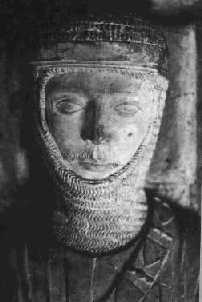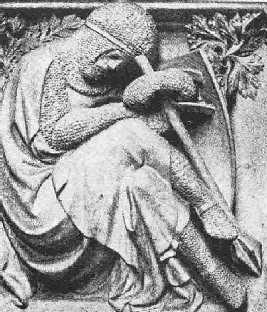Knights Templar

Helena Schrader's research on the Knights Templar provided the inspiration and basis for the three novels that together form the Templar Trilogy, These three novels, The Cypriot Knight, Sir Jean of Acre and The English Templar all to a greater or lesser extent describe historical events associated with the Knights Templar. Readers looking for magic, mystery or fantasy will be disappointed.
 was
inspired by a holiday in Cyprus. It takes elements of a family legend and weaves it together with historical fact to
create a simple love-story. The setting of the novel is tangible and visible to
this day - the Byzantine castle of Paphos, the Templar Commandery at Limasol,
the Castle at Kolossi, the Abbey of Bellapais – and of course the unchanging coastline and
mountains of Cyprus itself. It is a beautiful and dramatic setting – begging for
a novel. This is a novel which anyone who has visited and loved Cyprus should
enjoy reading.
was
inspired by a holiday in Cyprus. It takes elements of a family legend and weaves it together with historical fact to
create a simple love-story. The setting of the novel is tangible and visible to
this day - the Byzantine castle of Paphos, the Templar Commandery at Limasol,
the Castle at Kolossi, the Abbey of Bellapais – and of course the unchanging coastline and
mountains of Cyprus itself. It is a beautiful and dramatic setting – begging for
a novel. This is a novel which anyone who has visited and loved Cyprus should
enjoy reading.
Never the less, this is not a mere „costume-drama" in which modern characters with modern thoughts behave in ways unthinkable for the period. Nor is it true „historical fiction" in the sense of describing real historical events in fictional form. As a historian, however, I was careful that the story is plausible in the context in which it was set.
 is set against the background of the final destruction of the Christian
Kingdom of Jerusalem. Although it is a work of fiction, it weaves in many
known facts about the last years of Christian Palestine. The description of the
siege of Acre and the
events leading up to it - the riots, Beaujeu’s attempt to buy the city free, the
accusations of cowardice - are based on contemporary descriptions. Beaujeu’s
death and his words as he withdrew from the line of defence are
recorded. The Temple at Acre
did hold out 10 days longer than the City and the near surrender which turned
instead into a massacre is also history.
There is also evidence that certain „treasures" and individuals escaped from the
Temple in the very last days. Historical characters in the novel
include William de Beaujeu, Jacques de Molay, and Thibald Gaudin. The other
characters are fictional.
is set against the background of the final destruction of the Christian
Kingdom of Jerusalem. Although it is a work of fiction, it weaves in many
known facts about the last years of Christian Palestine. The description of the
siege of Acre and the
events leading up to it - the riots, Beaujeu’s attempt to buy the city free, the
accusations of cowardice - are based on contemporary descriptions. Beaujeu’s
death and his words as he withdrew from the line of defence are
recorded. The Temple at Acre
did hold out 10 days longer than the City and the near surrender which turned
instead into a massacre is also history.
There is also evidence that certain „treasures" and individuals escaped from the
Temple in the very last days. Historical characters in the novel
include William de Beaujeu, Jacques de Molay, and Thibald Gaudin. The other
characters are fictional.
 describes through
fictional characters the process by which Philip IV of France and Pope Clement V
destroyed the Knights Templar. This is probably one of the most controversial
events in medieval history to capture the modern imagination. There seem to be
no end of books about the Knights Templar and most of these focus on the lurid
final chapters with confessions of sodomy, heresy and idol worship. Tragically,
even modern writers like to believe there "must have been some
grain of truth" to the confessions - although these were admittedly obtained by
gruesome torture and the threat of burning at the stake.
describes through
fictional characters the process by which Philip IV of France and Pope Clement V
destroyed the Knights Templar. This is probably one of the most controversial
events in medieval history to capture the modern imagination. There seem to be
no end of books about the Knights Templar and most of these focus on the lurid
final chapters with confessions of sodomy, heresy and idol worship. Tragically,
even modern writers like to believe there "must have been some
grain of truth" to the confessions - although these were admittedly obtained by
gruesome torture and the threat of burning at the stake.
A historical note at the end of the novel provides readers with a detailed explanation of which aspects of the novel are based on historical fact and which are pure fiction. It is also a novel with a theme no less relevant today than in the 14th Century: it is the story of one man’s struggle for his own soul. It is a novel about the battle between good and evil, love and hate, which take place – always and again – in human hearts.